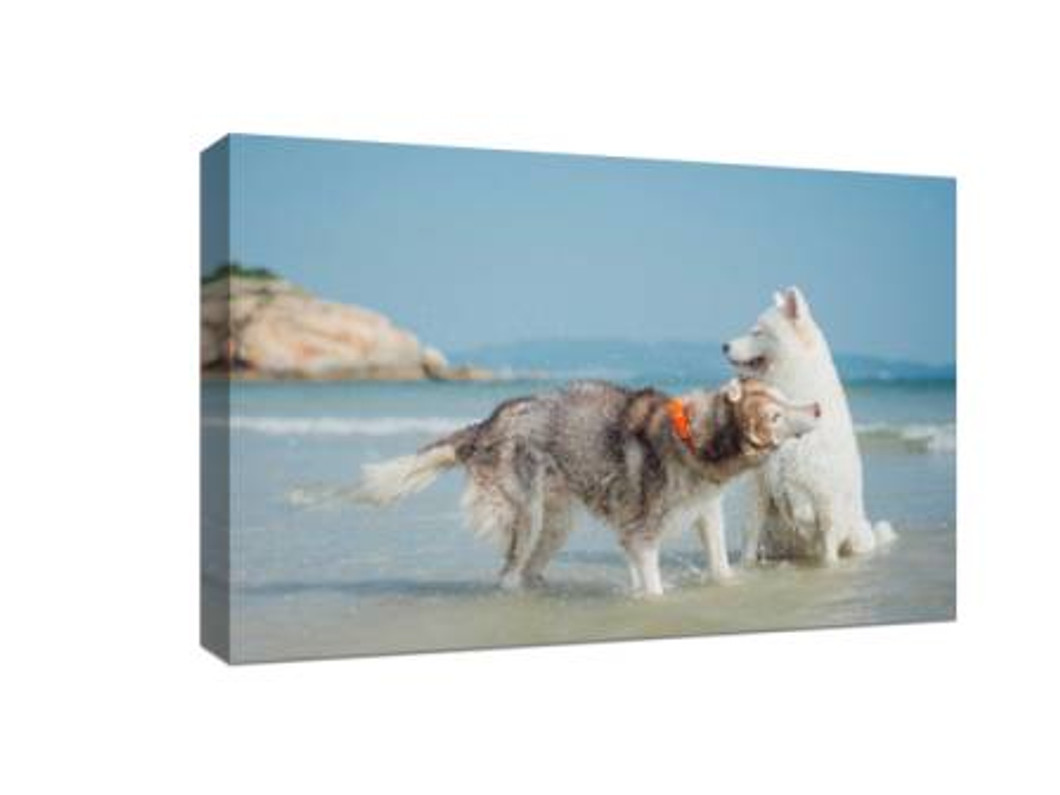How to Get Professional Pet Photography Works: Capture Your Pet’s Personality Perfectly
Pets are more than just animals—they are family members, companions, and loyal friends. Capturing their personality and charm in photographs is a rewarding but often challenging task. If you want your pet’s image to shine in your home or even as a cherished gift, professional techniques can make all the difference. One of the best ways to immortalize your pet’s personality is by turning your shots into a photo on canvas—a stunning, high-quality way to display their likeness with depth and elegance.
Whether you’re an amateur pet parent or an aspiring professional photographer, understanding how to capture pets effectively can transform simple snapshots into striking visual stories. Here’s a comprehensive guide to help you achieve professional-quality pet photography.
1. Understanding Your Pet’s Personality
Every pet has a unique personality, and understanding it is key to capturing authentic photographs. Observe your pet in different situations: when they play, nap, or interact with family members. Notice their quirks—whether it’s a playful tilt of the head, a mischievous glint in their eyes, or a calm, serene expression. Capturing these authentic moments will create more meaningful and engaging photographs.
Tips:
-
Spend time with your pet before the session to make them comfortable.
-
Use their favorite toys or treats to motivate natural expressions.
-
Avoid forcing poses; let their personality guide the composition.
2. Choosing the Right Equipment
While a professional camera can enhance photo quality, even smartphones with advanced cameras can produce excellent results. The key lies in understanding lighting, focus, and composition. Here are some essentials:
-
Camera: A DSLR or mirrorless camera with fast autofocus is ideal.
-
Lens: A 50mm or 85mm lens works well for close-up portraits, while a zoom lens can capture candid action shots.
-
Lighting: Natural light is the most flattering for pets. Shoot near windows or outdoors during early morning or late afternoon for soft, warm light.
-
Accessories: A tripod can stabilize your camera, especially in low-light conditions, and a reflector can enhance lighting on your pet’s face.
3. Creating a Comfortable Environment
Pets can sense stress and unfamiliarity, which can affect their behavior during a shoot. Creating a comfortable and familiar environment helps your pet relax and behave naturally.
-
Use a room they frequent or a backyard they love.
-
Keep the atmosphere calm and quiet to avoid startling them.
-
Let them explore the camera and equipment beforehand to reduce anxiety.
A relaxed pet is more likely to display genuine expressions that translate beautifully into professional photographs.
4. Mastering Composition and Angles
Good composition can turn an ordinary pet photo into a captivating portrait. Consider the following techniques:
-
Eye Level Shots: Getting down to your pet’s eye level creates a sense of intimacy.
-
Rule of Thirds: Place your pet off-center to create a balanced and visually pleasing composition.
-
Close-Ups: Focus on facial expressions, especially the eyes, to capture emotion.
-
Action Shots: Freeze moments of play or movement for dynamic images.
Experiment with angles and perspectives. Sometimes unconventional viewpoints can reveal surprising beauty and personality.
5. Patience and Timing
Pets are unpredictable. Patience is one of the most critical skills in pet photography. Allow your pet to move, explore, and settle into natural behaviors. Timing is essential—capturing the perfect expression or action often requires waiting for the right moment.
Tips:
-
Take multiple shots in bursts to increase the likelihood of getting the perfect photo.
-
Be ready to capture spontaneous moments; these often convey the most personality.
-
Keep sessions short to prevent fatigue or frustration.
6. Editing Your Photos
Post-processing can enhance your photos and bring out your pet’s best features. Adjustments in brightness, contrast, sharpness, and color balance can make your pet pop. There are many beginner-friendly editing tools available, such as Adobe Lightroom or free apps like Snapseed.
-
Crop and straighten for better composition.
-
Enhance the eyes to make them sparkle.
-
Remove distractions from the background to keep focus on your pet.
Even subtle edits can elevate a good photo to a professional standard.
7. Displaying Your Pet Photography
Once you have captured stunning images, consider transforming them into a long-lasting display. Printing your photos on canvas is a perfect choice. A photo on canvas adds texture, depth, and elegance to your pet portraits. It can serve as a centerpiece in your living room, a unique gift for friends and family, or a way to celebrate the bond with your beloved pet.
-
Choose high-resolution images for the best quality.
-
Opt for sizes that complement your space and décor.
-
Consider framing options or gallery-style arrangements for a professional touch.
8. Conclusion
Professional pet photography is both an art and a craft. By understanding your pet’s personality, choosing the right equipment, creating a comfortable environment, mastering composition, practicing patience, and refining your photos through editing, you can capture your pet’s true essence. Turning these images into a photo on canvas allows you to preserve these memories beautifully and enjoy them for years to come.
Investing time and effort into professional pet photography ensures that every wag, purr, and playful glance is captured with clarity, love, and artistry. Your pet deserves it, and so do you.
Recent Posts
-
How to Turn Your Photos into Stunning Acrylic Pictures for Your Walls
Turning your favorite photos into acrylic pictures from photos is a modern and stylish way to displa …28th Sep 2025 -
Bring the Ocean Home: Queensland Great Barrier Reef Photos on Canvas Wall Art Prints
Australia’s Great Barrier Reef is one of the world’s most breathtaking natural wonders. Its kaleidos …16th Sep 2025 -
Capture the Beauty of Gold Coast with Photography on Canvas Prints
Why Choose Gold Coast Photography on Canvas Prints? Gold Coast is one of Australia’s most iconic des …16th Sep 2025
